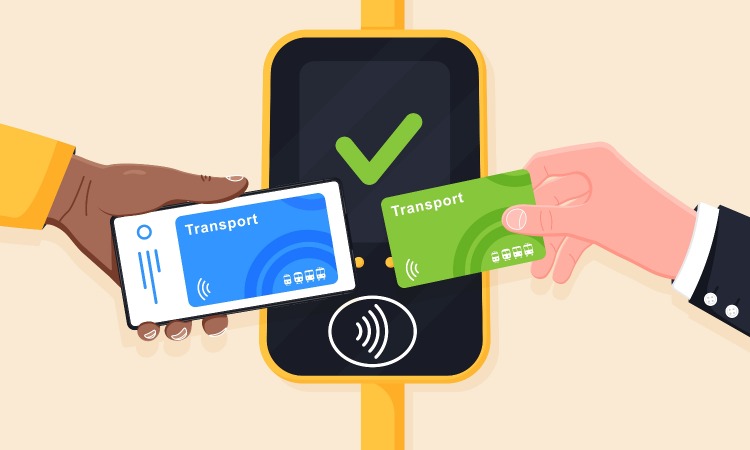Avoiding oversimplification: The art of ticketing
- Like
- Digg
- Del
- Tumblr
- VKontakte
- Buffer
- Love This
- Odnoklassniki
- Meneame
- Blogger
- Amazon
- Yahoo Mail
- Gmail
- AOL
- Newsvine
- HackerNews
- Evernote
- MySpace
- Mail.ru
- Viadeo
- Line
- Comments
- Yummly
- SMS
- Viber
- Telegram
- Subscribe
- Skype
- Facebook Messenger
- Kakao
- LiveJournal
- Yammer
- Edgar
- Fintel
- Mix
- Instapaper
- Copy Link
Posted: 9 March 2023 | Philippe Vappereau - Calypso Networks Association | No comments yet
For the first instalment in a new online-exclusive series published in partnership with Calypso Networks Association (CNA), Philippe Vappereau, General Manager at CNA, considers why it is important for public transport operators and authorities to avoid oversimplifying ticketing in order to create a seamless transport experience that is inclusive of all customers.


All great artwork contains complexities and colour variations that make it more than the sum of its parts. This principle can also be applied to the ticketing world. All too often, public transport authorities (PTAs) and operators (PTOs) try to oversimplify their ticketing offering by only using one ticketing solution – they only paint in one colour. Like an artist uses complementary colours, PTOs and PTAs can use complementary ticketing systems to appeal to the different needs of their customers.
Like an artist uses complementary colours, PTOs and PTAs can use complementary ticketing systems to appeal to the different needs of their customers”
From regular commuters to occasional riders, to one-time-use tourists, networks are under pressure to provide solutions that meet the diverse needs and expectations of different travellers. All of these passenger groups expect seamless public transport ticketing experiences, and one single ticketing model is not enough to meet this range of needs.
Developing a smarter and more inclusive contactless experience, therefore, requires sophisticated and innovative thinking. When developing a ticketing solution is simple for the developer, it is complex for the user to use; when it is simple for the user, it is complex for the developer. Operators and authorities must make sure that their solution has the necessary complexities to meet the needs of their passengers, without making it overwhelming or confusing for passengers to use. They must be able to strike the right balance.
Unique networks, unique solutions
The first point to note is that, in ticketing, one size does not fit all. Each network serves a unique customer base with its own needs and expectations. For example, an Account-Based Ticketing (ABT) system built around routine, regular users – such as commuters – may struggle to meet the needs of tourists who only use the network a handful of times.
Open standards developed specifically to support transport ticketing provide the certainty that multiple sources of supply exist, and that the failure of one source has limited consequences”
Meanwhile, an m-Ticketing solution that requires the user to download their ticket to a smartphone may be very practical in a city, but not in remote locations where phone signal reliability can be lower.
Budget is another differentiator. Networks with larger funds to invest in infrastructure and cutting-edge solutions undoubtedly possess an advantage in adapting their offer as technology and customer expectations evolve. However, a concern that unites all networks is supply chain resilience. Regardless of budget, if a network is locked in with a single proprietary vendor for all of its ticketing needs, it places itself at the mercy of its supply chain, exposing itself to price gouging and poor service.
This is why open standards in ticketing are both more economical and more adaptable to future technology or societal changes. Open standards developed specifically to support transport ticketing provide the certainty that multiple sources of supply exist, and that the failure of one source has limited consequences.
Addressing the cost-of-living crisis: Transport ticketing’s role
Fare flexibility
Traditional travelling patterns have been heavily impacted over the past few years. One of the enduring impacts of the pandemic has been the rise in home working, causing a sizeable drop in the number of regular commuters. Meanwhile, tourism has still only reached 65% of pre-pandemic levels – a potential consequence of the latest cost-of-living crisis.
PTOs and PTAs must create tariff structures that offer flexibility and value; they must go beyond a simple weekly or monthly ticket”
Stating it plainly – networks can no longer accurately predict how these two key passenger groups will act. Thus, they must adjust their offering accordingly.
PTOs and PTAs must create tariff structures that offer flexibility and value; they must go beyond a simple weekly or monthly ticket. By expanding on these traditional ticketing options to create a more flexible offering that includes enhanced pay-as-you-go solutions and accessible concessionary fares, operators and authorities can remove the pressure to predict passenger movements and make public transport a more attractive and affordable option than private vehicle use.
Avoiding exclusion
More ticketing flexibility also helps to mitigate the risk of potentially excluding individuals from the right to travel… It is imperative that no one gets left behind”
More ticketing flexibility also helps to mitigate the risk of potentially excluding individuals from the right to travel. Certain demographics that are less tech-savvy, or the unbanked, do not have either the means or the desire to use digital-only ticketing. Creating a system that assumes that users can or will make payments digitally can lock these people out of being able to pay for and use their local public transport network.
It is imperative that no one gets left behind. Even as entire countries plan nationwide open-loop payments infrastructures, such as in New Zealand, networks are fully aware that they cannot and must not forget about those who are unable or unwilling to use bank cards or mobile ticketing.
The art of complementary systems
To address each of these concerns, stakeholders all too often ask which is better for their network: open loop or closed loop. The answer is both. One must not be seen to replace the other, but rather add value and choice. In doing so, operators and authorities can access the best of both systems, while mitigating any shortcomings.
By using complementary ticketing systems, PTOs and PTAs can give their ticketing masterpiece the colour it needs to bring it to life and ensure the best possible passenger experience”
An excellent example of this is in the city of Brussels in Belgium. Its primary operator, STIB/MIVB, has implemented an open loop system that gives passengers the option of using their EMV® bank card as a ticket. It has implemented a solution that allows the acquisition and use of transport rights by using a bank card directly at the network’s entrance terminals in a pay-as-you-go modality. This is in addition to the existing closed loop system – based on the Calypso open standard – that provides another choice for passengers while retaining the control and flexibility that closed loop ticketing offers, particularly for more regular users.
In short, open loop is complementary to closed loop open standard ticketing systems. Open-source SDKs, such as Eclipse Keyple, are also available for free for operators and authorities to create bespoke ticketing solutions for their network. They allow governance of a ticketing network to stay in the hands of the operators and authorities by enabling open loop solutions in combination with the strong foundation of a closed loop system. By using complementary ticketing systems, PTOs and PTAs can give their ticketing masterpiece the colour it needs to bring it to life and ensure the best possible passenger experience.


Related topics
Accessibility, COVID-19, Passenger Experience, Public Transport, Ticketing & Payments
Related organisations
Calypso Networks Association (CNA)
Related people
Philippe Vappereau








